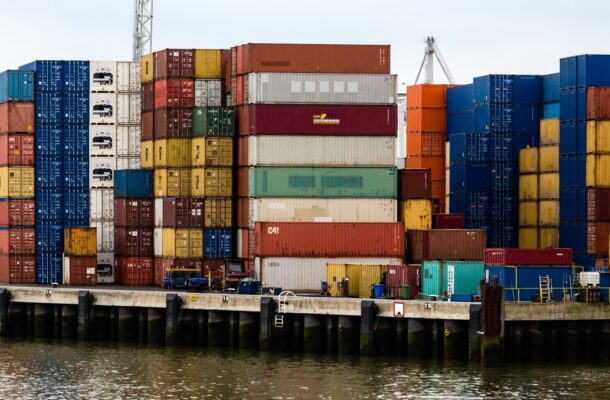Australia’s opportunity in regional trade

The Regional Comprehensive Economic Partnership (RCEP) brings unprecedented opportunities to the country. Together with 14 other states, Australia joins the world’s largest trade partnership ever created, tapping into 2.2 billion consumers and 30 percent of the world’s GDP.
RCEP was initiated by ASEAN in 2012 and Australia was key in its forming. Signed in Hanoi in 2020, it came into force on 1 January 2022, with member states Australia, China, Japan, New Zealand, South Korea and ASEAN (Brunei Darussalam, Cambodia, Laos, Singapore, Thailand, Vietnam, Malaysia, Indonesia and the Philippines).
Key elements of the agreement includes reduction of trade barriers, harmonisation of rules of origin, liberalisation of trade of services, and facilitation of offshore investments. This will lead to increased regional trade and foreign direct investment, and contribute to regional and global economic growth.
RCEP is estimated to boost the region’s GDP by 3 percent and reduce poverty by 1.6 percent. Economies expected to benefit the most are China, Japan, and South Korea (the two latter did not have trade pacts with China previously), and low-income countries like Lao, Indonesia, Vietnam and Philippines, from increased FDI.
Australia trade patterns
With 28 percent of Australia’s exports and 22 percent of total imports, China is Australia’s main trading partner. Australia’s other top export countries are Japan (18 percent), South Korea (8 percent), India (5 percent) and the USA (5 percent).
In terms of imports, China remains a major partner (22 percent) with the US in second position (11 percent), followed by Singapore (6 percent), South Korea (5 percent) and Japan (5 percent). For Australia’s overall trade, RCEP accounts for 75 percent of total exports and 60 percent of total imports.
One third of Australia’s exports is iron ore, mainly used to manufacture steel. Some 2/3 of these exports go to China, which has massive steel demands due to its booming construction industry. But the boom seems to be ending and China’s demand for this mineral is gradually slowing, leading to a decrease of 30 percent of the global iron ore’s price, and putting the iron industry under huge pressure.
With 16 percent of total exports, coal is Australia’s second largest export product. With competitive prices, coal remains a highly in-demand product, especially for energy-hungry countries like China, Japan, and South Korea, which are Australia’s top three coal-buying trade partners.
Again, of these three, China is the biggest buyer, accounting for almost half of total coal exports in 2020. Due to political tensions in 2021, China imposed a partial import ban on Australian coal, putting the country’s industry under severe pressure until the ban was lifted again last year. This event showcased Australia’s delicate export dependency on China in some of its key export products.
But there is further pressure down the line. The zero-emission goals signed by most Asian countries will eventually force them to move away from coal to renewable energies. Though Australia’s coal sector looks optimistic at least for the next 5-10 years, the government should start creating some transition plans for this industry, to reduce the risk of becoming obsolete by the end of 2030.
Australia’s third largest export product is fossil fuel, more specifically petroleum gas. Again, the main buyers are China (38 percent), Japan (31 percent) and South Korea (13 percent). Although this energy source creates greenhouse gas emissions like coal, it is relatively cleaner and presents itself as a possible cleaner energy source as countries move away from oil and coal.
Australia’s exports of services are unusually low for a mature economy due to its reliance on natural resources. Nevertheless, Australia maintains a solid profile as a main educator in the region on vocational training and university studies. Interestingly, Australia’s top export product to Vietnam is not energy but education, mainly through its prestigious RMIT university.
Australia’s imports are more diversified than its exports, with most imports being in the automobile and electronic sector. The main import product is refined petroleum, accounting for 8 percent of total imports. In fact, within RCEP countries and India, Australia exports roughly all its crude oil, some 420 million barrels and imports approximately 480 million barrels of refined petroleum annually.
As Australia’s main export partners depend on energy sources and natural resources that Australia delivers, trade limitations are virtually non-existent. Hence, reducing tariffs within RCEP will increase demand for Australia’s agricultural products, though these remain small compared to its main export products.
Therefore, Australia’s exports and the overall economy will marginally benefit from trade liberalisation within RCEP. Furthermore, consumers will also not benefit much from import price decreases, as Australia maintains some restrictions on the import of vehicles, electronics, and natural resources like oil and gold.
Time to Act
While Asian countries are expected to benefit largely from RCEP, Australia’s benefits may be moderate, due to its current trade patterns. If Australia wants to benefit on a larger scale, some key policies need to be implemented.
Build Australian offshore steel manufacturing
The three main buyers of Australian iron ore, China, Japan and South Korea, are also the main global exporters of steel. With a markup of up to 770 percent from iron ore to steel, steel-making is a lucrative business. RCEP facilitates building Australian steel manufacturing in countries like Vietnam, Indonesia or Cambodia.
This would be advantageous for several reasons: for the same volume, steel is 2.5 times heavier than iron ore, making its transport more expensive than iron ore. Hence, it would make sense to transport the ore to an Australian factory in SEA, saving transport costs, and producing the steel nearer to its destination market, rather than producing steel domestically.
Also, this would allow Australia to benefit from low labour costs making Australia’s steel attractive. China is especially benefiting from Australia’s apathy in this sector, allowing it to be the world’s largest steel exporter.
Australia could take advantage of the new possibilities that RCEP gives by reducing its dependency on China and offering alternatives to Chinese steel in the market. This would increase the national wealth and job opportunities in less-developed countries.
Build oil refineries in Indonesia and/or the Philippines
As mentioned, Australia exports roughly 420m barrels of crude oil which is then re-imported in refined form with a potential loss of two to four billion US dollars yearly. Countries refining and selling Australia’s oil back are mainly Singapore and South Korea.
By building refineries in Indonesia and/or the Philippines, Australia could secure the profit of its own oil, reduce dependency on this key resource, benefit from cheaper production costs, and continue to assure environmental protection in the process.
Build up the Technical and Vocational Educational Training for the region
Many countries within RCEP lack skilled- and trade-workers other than university education. Countries like Vietnam, Cambodia, Thailand, and Indonesia have a very rudimentary VET training sector. The countries lack professional electricians, mechanics, IT staff, and healthcare professionals.
In 2022, Australia was Asia’s top worldwide VET student destination followed by New Zealand, Canada, and Germany. Facilitating this type of training would strengthen Australia’s key position in the region whilst generating additional trade income.
This article was written by Dr Daniel Borer, a course coordinator and lecturer in economics in the College of Business and Law, at RMIT University Vietnam; and Dr Ronald Kumar, who is also Course Coordinator at RMIT University Vietnam. It was published by the Australian Institute for International Affairs.
Daniel Borer is a course coordinator and lecturer in economics it the College of Business and Law, RMIT University Vietnam.













